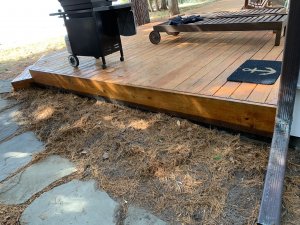It is that time of the year (again) when homeowners need to start thinking about fall exclusion against overwintering pests and wildlife rather than prevention alone. It is most ideal for homes and businesses to take the necessary steps to exclude various pests before the temperature really begins to drop.
The most common fall pest problems include:
-
Rodents
-
Wildlife
-
Overwintering Insects
Rodents
The house and field mouse are two of the leading players in this group. The house mouse prefers grains, seeds, cereals, fruits, and vegetables— virtually anything humans will consume. They will take up residence inside and feed off of whatever they can find, and they do not come and go.
Field mice are most known to find dwellings inside in older homes and structures, such as barns, garages, etc. We most commonly find them in areas where there are more forests and fields. They are scavengers and will eat any food that is readily available to them— from birdseed to garbage.
Wildlife
Wildlife that you may find yourself trying to eliminate from your home would include raccoons, squirrels, birds, bats, and opossums. These animals can create several different issues depending on the animal. They all, however, can wreak havoc on your home, attic, and electrical equipment, not to mention the health hazards which can arise from the feces and urine. All of these animals search for ideal places to overwinter, which is why fall exclusion can be very common.
Overwintering Insects
These include anything that will try to survive the cold winter months inside a hidden protective section of your home or business. This includes stink bugs, Asian lady beetles, and cluster flies.
Stink bugs are small enough to use many different opportunities to enter a structure, so think about more than just the windows or doors as possible entry points.
Overwintering guests usually occur in the fall when the temperatures start to drop. They can be located in your attic for up to six months during the winter, which is why homeowners will then see huge populations as they make their way out around the windows and doors as the temperature begins to increase.
When the stinkbug or other pest starts warming up, you may begin seeing them move out of light fixtures, vents, and any other opening they may have found. Their antennae are capable of sensing temperature change and wind current.
So why exclusion as opposed to trapping?
Fall exclusion is always the best policy with overwintering pests (although it is not 100% when it comes to in-laws).
Protecting an area against pest access via physical exclusion is the most effective method for protecting your home or structure. Exclusion involves altering the environment so pests cannot enter or travel through.
Wildlife tends to occupy space under structures or decking through unseen gaps and holes. To most homeowners, merely trapping the animal seems like the best option. Though useful in most cases, trapping is not a permanent fix. Typically, property owners have had to trap an animal every year in the same spot. Excluding the deck using different applications, depending on the intended animal (or animals) that the homeowner would like to keep out, is the key to success. In most cases, the exclusion is guaranteed permanent.
How do you know exclusion is best for you? Just take a look!
The best starting point is to walk the perimeter, scanning the home top to bottom. Look for overhanging branches that may give easy access to the roof or vents. Look for entry points that need to be repaired. Think small; a mouse can enter into a hole the size of a dime.
Look for excessive coverage on the ground level. Make sure you are not giving rodents and other animals a protective place to move around with no chance of being discovered. Think about relocating woodpiles and other items that may be leaning up against the home or structures, as these can be safe havens or access points for unwanted guests.
Call a Pest Control or Wildlife Removal Professional
Exclusion reduces long-term pesticide requirements, as well as continued trapping. There are particular products we utilize to stop mice or other pests from entering a structure. A copper mesh can be used in most entry points where ventilation is needed. Caulk, netting, and wire mesh are ideal around windows, doors, holes, and cracks. Cap the chimney opening, ridge vents, and any other accessible runs into the attic should be repaired and closed off.
During our inspection, we will also check openings from the ground on up, look at the roof, shingles, vents, soffits, and plumbing penetrations.
We’ve excluded, but are still spotting wildlife scurrying about.
If you happen to be dealing with a severe rodent problem, it may be time to invest in bait stations and bait to place around the structure and keep them working for you year-round. This will keep the outside population under control and help stop them from entering at all.
For overwintering insects, applying a residual insecticide to the entry points will eliminate the large populations you may find yourself. Spraying the exterior of the home, usually, the south side is an excellent area to start as this will help reduce the numbers that make it inside.
Example of our work



Hogarth’s Pest Control & Wildlife Removal offers our customers a solution to the entire problem, not just a band-aid. If you are suffering from any unwanted pests or wildlife near your home this fall, exclusion may be right for you. Call us today!